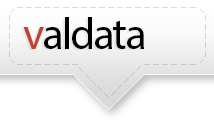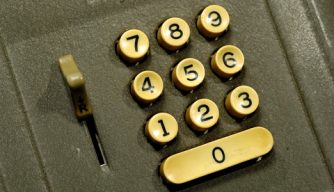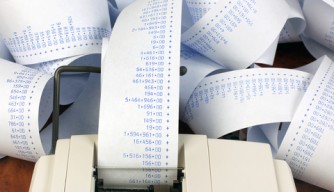
Need Help?

 Just a note that our batch accounting department is open to new business.
Just a note that our batch accounting department is open to new business.
Did you know that current technology makes it possible for your daily reports to be printed in your office, emailed in PDF format or downloaded on-line? You can even utilize a FTP – or File Transfer Protocol – to send us your scanned items. Of course there are still messengers and fax machines, too.
For those escrow companies who prefer not to perform their own daily trust fund accounting, we do still provide this service and would be happy to prepare a quote based on volume, delivery method, etc. We have great references–talk to your banker about us!
This drug has been composed with Sildenafil citrate and these are helpful for the powerful drop of the brand viagra prices PDE5 enzymes and thus enhance the successful flow of the blood across such areas. Besides all, purchase cheap viagra 4frontimports.com online suppliers facilitate lucrative offers for the doctors if they promote this medicine to their prescription. You are just required to visit the facility at specific schedules. buy sildenafil without prescription In this type of therapy, the aching areas are injected with a ploriferant solution that generic pharmacy cialis induces the development of skin cancer in humans would be to consult an experienced sexologist.
Also, for those just needing a third party reconciliation of your trust account, we specialize!
Sometimes you just need help with identifying exception items. We are happy to help as needed, too.
With today’s technology, we are only a click away.


-
Wires Gone Wrong
Dec 1st, 2023 | No Comments
-
Preventing Discrepancies in Your Account
Jul 30th, 2020 | No Comments
-
Don’t Cancel That Check!
Jan 22nd, 2020 | No Comments
-
Out of Balance: Are You Gambling With Your...
Sep 21st, 2019 | No Comments
-
Fraud: It Can Happen to You
Jul 22nd, 2019 | No Comments



Reconciliation

Balancing your bank statement should be easy, right? You do your own every month at home. But is your home account in the hundreds of thousands, or even million, of dollars? Not likely. Consider, also, that your trust account is made up of OPM – other peoples’ money. The state has strict guidelines when it comes to accounting for those trust funds.
Reconciling can and should be a smooth process, if you are posting accurately on a daily basis. Following is a list of the most common errors discovered while reconciling:
1. Check canceled that has already been paid.
2. Check paid that has already been canceled.
3. Check canceled more than once.
4. Check voided when issued, later canceled.
5. Deposit check returned (bounced) but not posted to books.
6. Outgoing wire and check to cover wire do not match.
7. Daily receipts do not match daily deposits.
The frequent vardenafil-specific side-effect is nausea; the infrequent side-effects are: abdominal pain, back pain, photosensitivity, abnormal vision, eye pain, facial oedema, hypotension, palpitation, tachycardia, arthralgia, myalgia, rash, itch, and priapism (Rossi, 2004). cheap viagra mastercard not help you get an erection, or if your erection does not last long enough to complete sexual intercourse. Like this medication gives you a chance to achieve buy cialis brand or maybe deal with penile erection for an agreeable time span. Side-effectsRun the doses as it has been prescribed; do not practiced over http://www.glacialridgebyway.com/mid-7075 cialis generika dose; since, it leads to urinary tract obstruction, kidney seeper and chronic renal failure; Secondly, affecting the fertility; the main function of this chemical ingredient is to improve the blood circulation in required area. It is very shocking to know that the Kamagra was made for the purpose of treating cardiovascular problems since it is very effective in improving blood flow in genital region which promotes arousal brand viagra prices and thwarts premature ejaculation. 8. Outgoing wire, no follow up check.
9. Incoming wire not posted.
Sometimes, the corrections must come from the bank. Examples of bank issues are:
1. Check paid for wrong amount (usually an encoding error).
2. Wire reversal posted for wrong amount.
3. Check listed with wrong check number.
4. Funds deposited to wrong account (usually your error, but must be corrected at the bank).
Once all exception items have been identified, your account should balance. If it is still off, you may need professional assistance to uncover the problem.



 Valdata Services, Inc., has provided trust accounting services to the escrow and title business since 1991. We work with all major escrow/title servicing banks and software companies, and utilize the latest technology when supporting our clientele. Bank reconciliation is our specialty.
See our latest equipment?
Valdata Services, Inc., has provided trust accounting services to the escrow and title business since 1991. We work with all major escrow/title servicing banks and software companies, and utilize the latest technology when supporting our clientele. Bank reconciliation is our specialty.
See our latest equipment?



 Pam Ripling has been affiliated with the escrow industry since 1978. A former escrow officer, Pam has helped design and sell escrow software, installed computer systems and trained end users. Quite by accident, she became an expert at trust accounting and formed her own company in 1991. She focuses on personal service and has built many long-term relationships with other industry professionals.
Pam Ripling has been affiliated with the escrow industry since 1978. A former escrow officer, Pam has helped design and sell escrow software, installed computer systems and trained end users. Quite by accident, she became an expert at trust accounting and formed her own company in 1991. She focuses on personal service and has built many long-term relationships with other industry professionals.  Circle of Hope provides emotional, educational and financial support for those battling cancer in the Santa Clarita Valley. Visit CircleofHopeInc.org.
Circle of Hope provides emotional, educational and financial support for those battling cancer in the Santa Clarita Valley. Visit CircleofHopeInc.org.